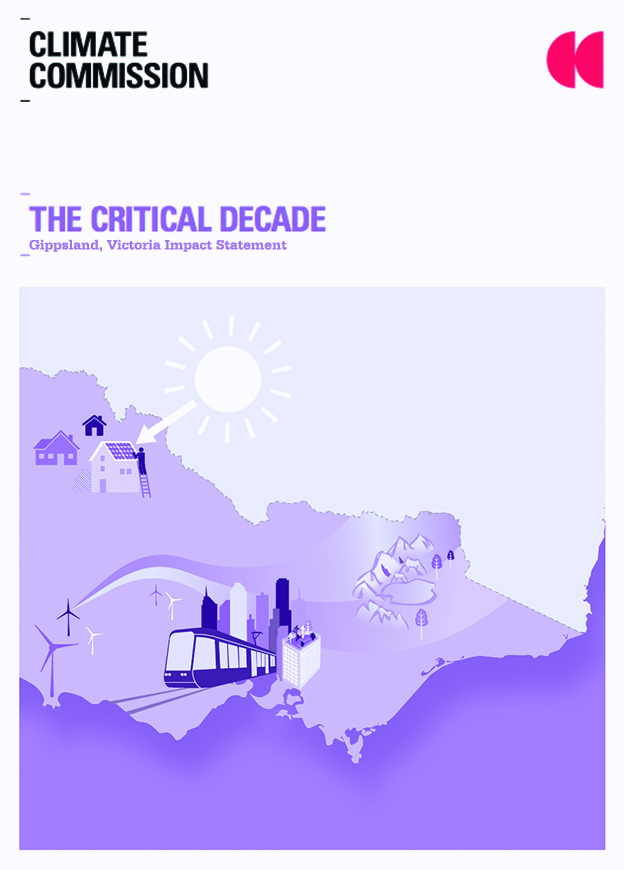This content is more than 10 years old
Gippsland is vulnerable to the impacts of a changing climate. Changes in rainfall patterns pose challenges for water supply and agriculture while higher temperatures increase the risk of large and intense bushfires. There are also serious consequences of rising sea levels for the Gippsland region.
This climate change impact statement for Gippsland, Victoria accompanies The Critical Decade report and highlights key climate change impacts and opportunities for the region:
- Changes in rain-fall patterns pose challenges for water supply and agriculture across Gippsland. Longer dry spells will threaten livestock and crops and could reduce water quality in the catchment area. On top of this the increased frequency of intense rain events cause severe flooding which could impact on infrastructure and agriculture.
- Higher temperatures and more hot days will increase the likelihood of large and intense bushfires. Days with low humidity, high winds and extreme temperatures are likely to become more common. More frequent and intense fires pose threats not only to property and human life but to water quality in catchment areas.
- Gippsland is under particular threat from rising sea levels. The Gippsland Lakes including Ninety Mile Beach and Corner Inlet represent one of the most vulnerable coastal areas in Australia.
